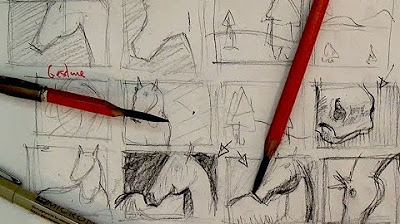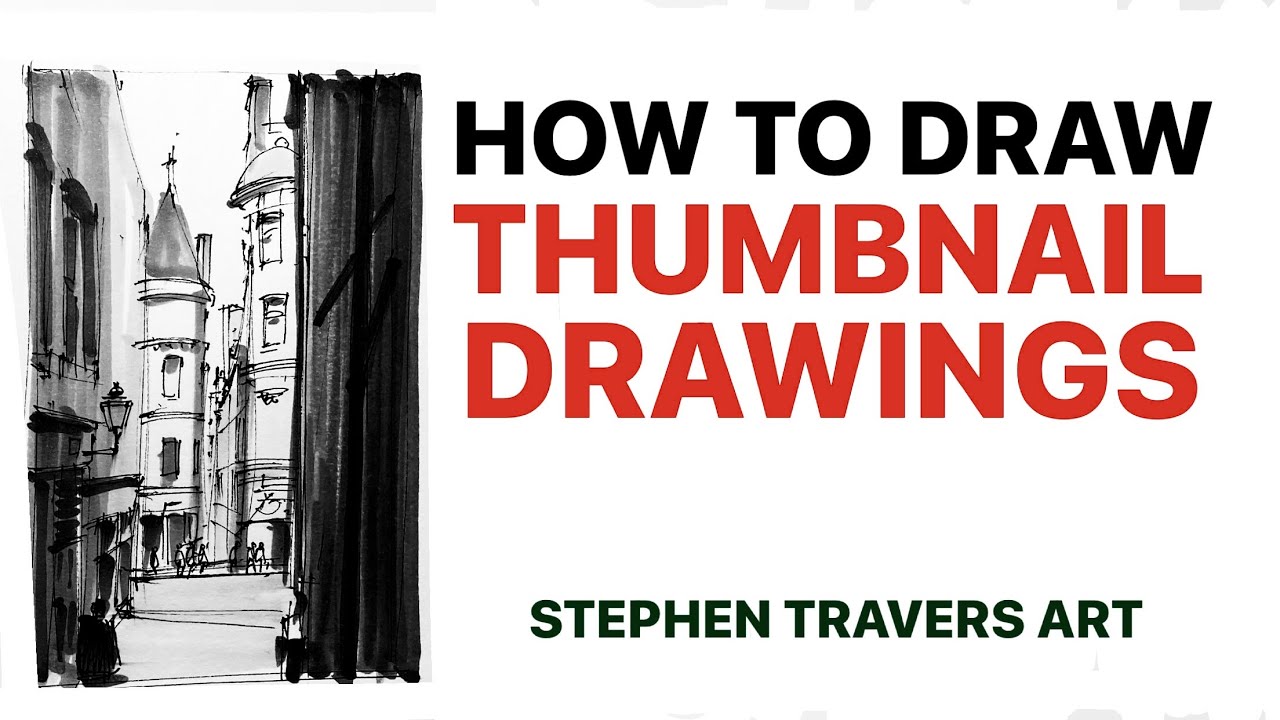About Thumbnail Sketches
Summary
TLDRIn this art tips video, Marty Owings explores the utility of thumbnail sketches, aiming to demystify their role in the creative process. He discusses their importance in refining compositions, layouts, and even tonal values and color schemes before committing to a finished piece. Marty shares his personal approach, emphasizing that while thumbnail sketches are not finished works, they are instrumental in avoiding mistakes and solidifying ideas. He demonstrates creating quick sketches and suggests using them to evolve into more detailed studies or paintings, appreciating their potential as standalone art forms.
Takeaways
- 🎨 Thumbnail sketches are a preliminary tool used by artists to plan compositions, layouts, tonal values, and colors for their artwork.
- 📏 Marty Owings uses boxes or rectangles to contain his thumbnail sketches, emphasizing the importance of a quick and basic approach.
- ✏️ The use of a soft lead pencil like the TK9400 fabric pastel pencil allows for easy sketching and minimal erasing.
- 💡 Thumbnail sketches are not finished works of art but serve as a part of the creative process leading to a final piece.
- 🚫 Marty clarifies that while thumbnail sketches can be beautiful, they are not the end goal but rather a stepping stone in the artistic process.
- 🖼️ Thumbnail sketches help artists determine whether to proceed with a painting or drawing, and they help eliminate mistakes in future works.
- 🖌️ Historically, master painters used thumbnail sketches as a part of a multi-step process before creating a finished oil painting.
- 🌟 There's a recognition that some thumbnail sketches can be so well-executed that they could be considered finished works of art.
- 🎨 Marty enjoys creating thumbnail sketches for their own sake, appreciating them as a form of art and a way to explore composition and color.
- ❄️ An example is given where Marty turns a simple sketch into a winter scene by adding paint, demonstrating how thumbnails can evolve.
Q & A
What is the main topic of Marty Owings' video?
-The main topic of Marty Owings' video is the utility and process of creating thumbnail sketches in art.
Why does Marty Owings suggest using thumbnail sketches?
-Marty Owings suggests using thumbnail sketches to help determine whether to proceed with a painting or drawing, to eliminate mistakes in future work, and to ensure correct composition, tonal value, and color.
What materials does Marty Owings typically use for thumbnail sketches?
-Marty Owings uses a TK9400 fabric pastel pencil with a 4B lead for thumbnail sketches, and he may also use a number 10 flat brush for adding basic colors.
What is Marty's opinion on the use of erasers in thumbnail sketches?
-Marty Owings hopes not to use an eraser for thumbnail sketches because they are meant to be basic, but he keeps one on hand just in case.
How does Marty define a thumbnail sketch?
-Marty defines a thumbnail sketch as a preliminary drawing used to plan the composition, layout, and sometimes tonal value and color of a piece of art, but not as a finished work of art.
What historical process does Marty mention in relation to thumbnail sketches?
-Marty mentions that in the olden days, a master painter might do a thumbnail sketch, then a watercolor study, an oil study, and finally their finished oil painting.
Can thumbnail sketches be considered finished works of art according to Marty?
-While Marty does not consider thumbnail sketches as finished works of art due to their intended use, he acknowledges that some thumbnail sketches can be so beautiful that they could be characterized as finished works.
What is Marty's personal practice with thumbnail sketches?
-Marty's personal practice is to use thumbnail sketches as a part of the evolution towards a finished work, not as the complete work itself, but he also enjoys them as a form of art in their own right.
How long does Marty typically spend on a thumbnail sketch?
-Marty typically spends a matter of minutes on a thumbnail sketch, aiming for quick composition and layout ideas rather than precision.
What does Marty suggest for viewers who are interested in learning more about thumbnail sketches?
-Marty encourages viewers to share how they use thumbnails or why they don't, and to drop a note in the comments section for further discussion.
Outlines

Cette section est réservée aux utilisateurs payants. Améliorez votre compte pour accéder à cette section.
Améliorer maintenantMindmap

Cette section est réservée aux utilisateurs payants. Améliorez votre compte pour accéder à cette section.
Améliorer maintenantKeywords

Cette section est réservée aux utilisateurs payants. Améliorez votre compte pour accéder à cette section.
Améliorer maintenantHighlights

Cette section est réservée aux utilisateurs payants. Améliorez votre compte pour accéder à cette section.
Améliorer maintenantTranscripts

Cette section est réservée aux utilisateurs payants. Améliorez votre compte pour accéder à cette section.
Améliorer maintenantVoir Plus de Vidéos Connexes

How to Draw Tips | What are thumbnail sketches? How to use them

If You Only Have 5 Minutes to Draw ... You Might Need This Video

How to Use Adobe Photoshop (Part 1) Graphic Design Tutorial for Beginners

Most common DRAWING MISTAKES (and how to solve them) | DrawlikeaSir

How a Pro YouTuber Actually Makes Thumbnails

How to Draw A Thumbnail Drawing
5.0 / 5 (0 votes)
